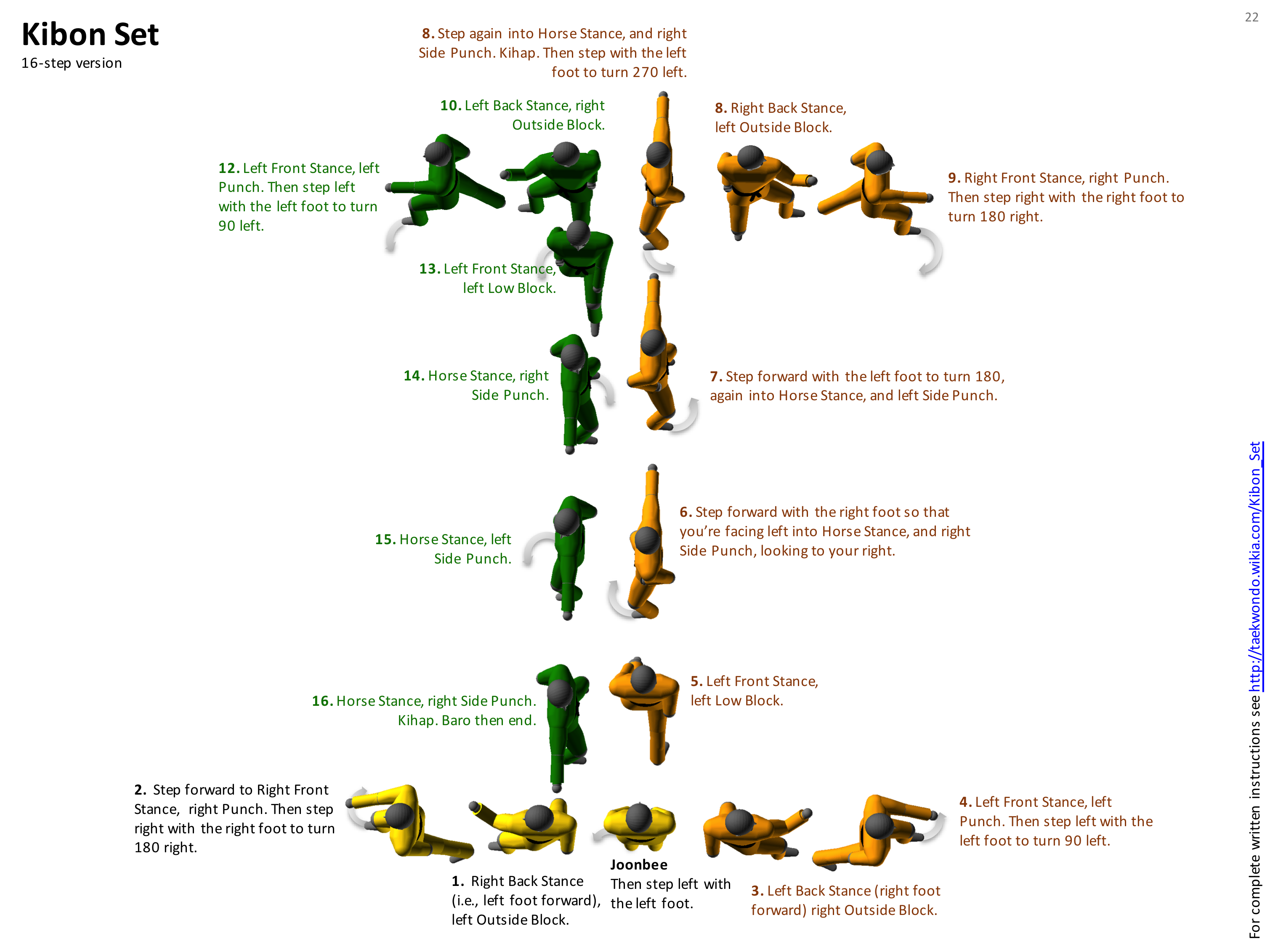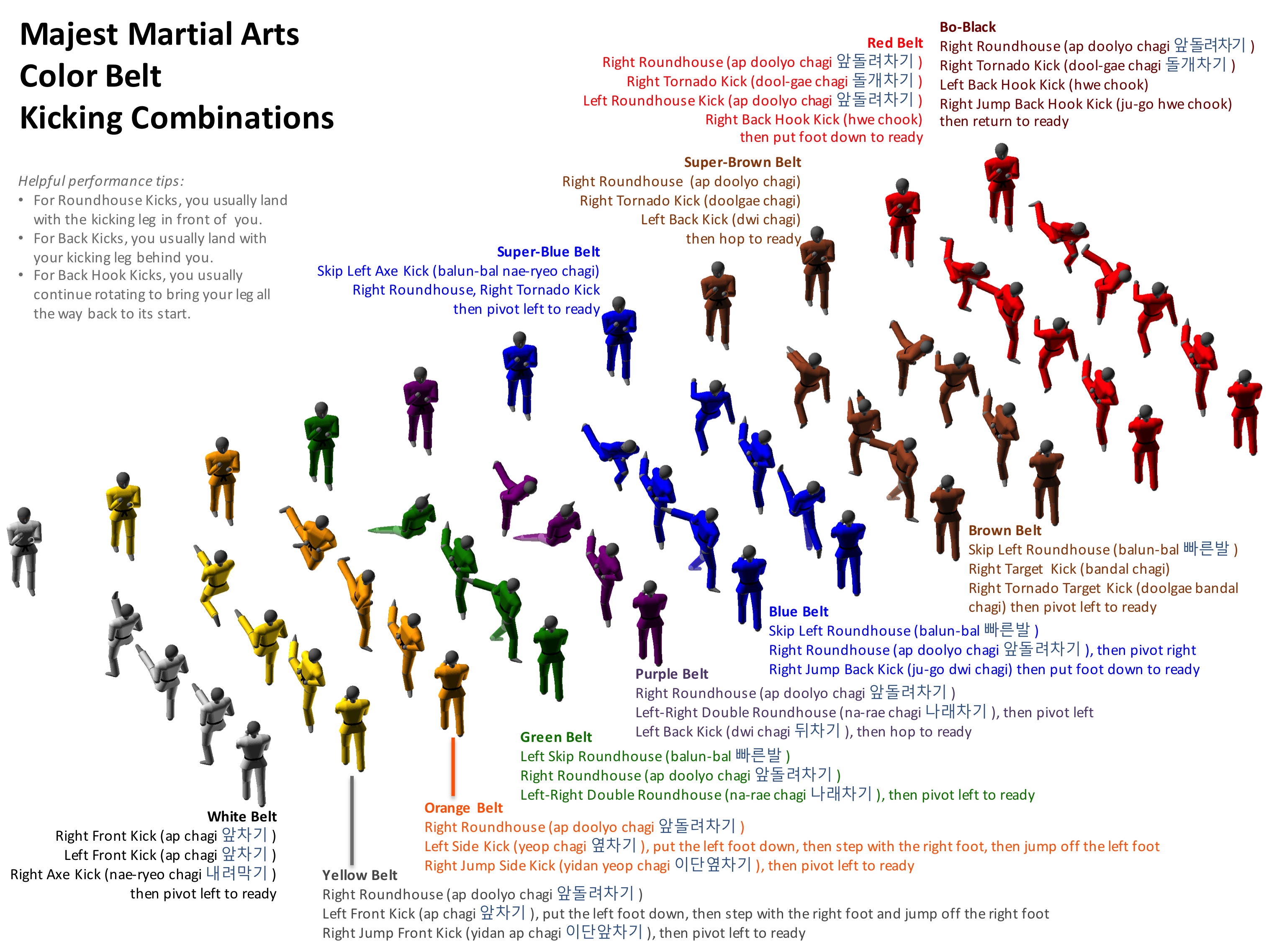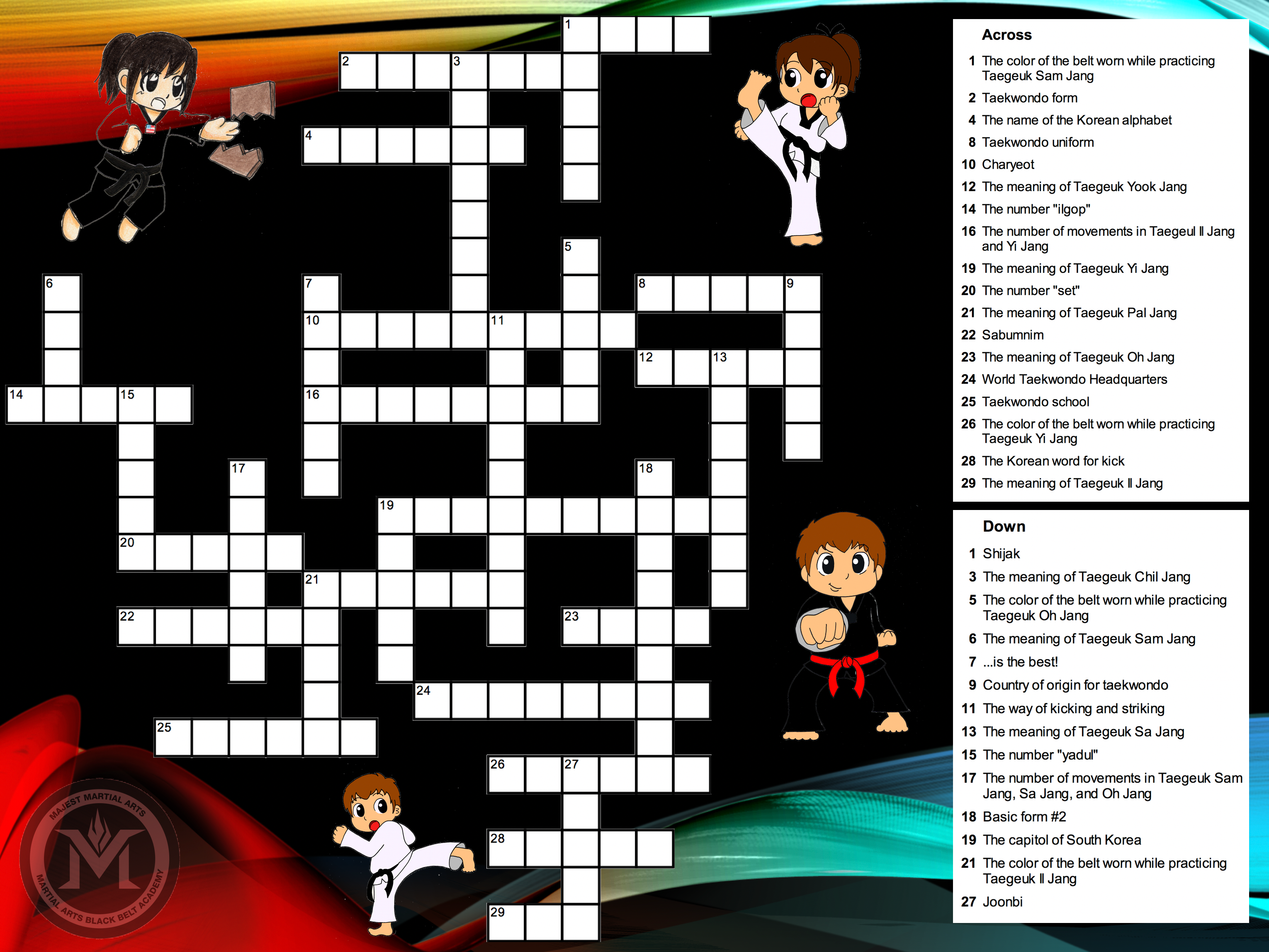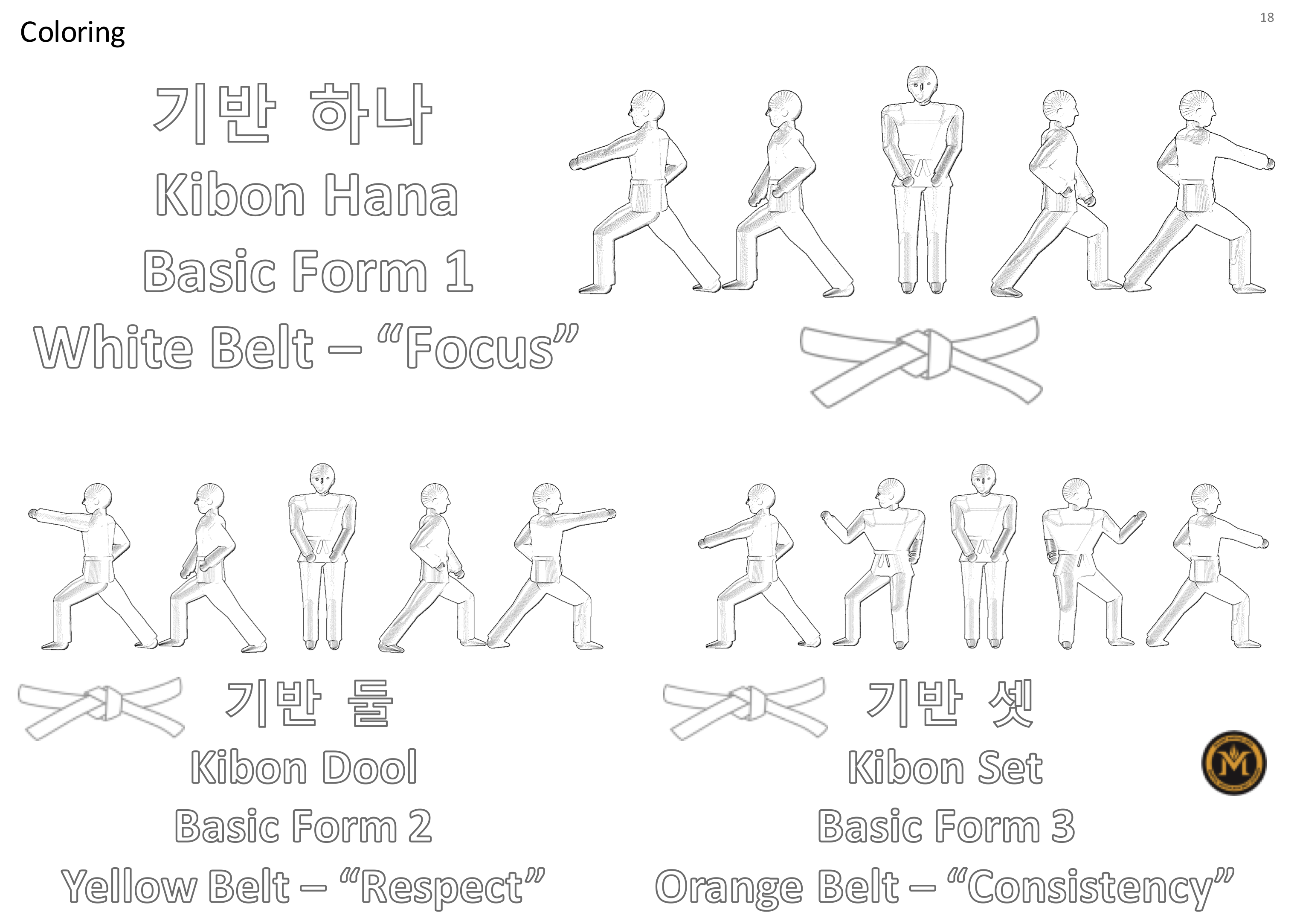Orange Belt Curriculum
Majest Martial ArtsLike the two poomsae before it, the Orange Belt (7th gup) form (Kibon Set) has an I-shaped floor pattern. Though this is still considered a basic form, it teaches some very important new techniques that students can spend years perfecting: the Back Stance, the Horse-Riding Stance, the Outside Middle Block, and the Side Punch.
Note that for clarity this diagram shows only the first 16 steps of Kibon Set. The final four steps simply repeat the starting line.
The stance transitions in this form are particularly complex: Back Stance to Long Stance and Horse-Riding Stance. There’s a tendency for beginners to “bob up and down” while they perform these transitions, but the correct technique is to keep your body’s height level throughout the transitions — though this can require months of practice to perform well.
You can read more about Kibon Set, including step-by-step instructions, here: Kibon Set. In addition, the videos below demonstrate how to perform the Kibon Set, the Majest Orange Belt kicking combination, and the Majest Orange Belt breaking technique (a Jump Front Kick, or yi-dan ap-chagi).
8th gup - Orange Belt, Kibon Set (step by step)
This video shows the Kibon Set poomsae performed slowly, step-by-step.
8th gup - Orange Belt, Kibon Set (step by step)
This video shows the Kibon Set poomsae performed slowly, step-by-step, with written instructions.
8th gup - Orange Belt, Kibon Set
8th gup - Orange Belt breaking
At Majest the Orange Belt (8th gup) breaking technique is the Jump Front Kick (ee-dan ap chagi). This kick is interesting because the student launches off the same leg that kicks the board; the other leg is used only to generate upward momentum for the jump. The student hoists the left leg into the air to gain upward momentum, launches off the right leg to jump, then breaks the board with the right leg. As with all breaking demonstrations, there are three kihaps (yells) in the demonstration: one yell at the outset of the demonstration, a second yell at the moment of impact, and a third yell to conclude the demonstration. (The Korean word “ki-hap” means “to focus your energy, or ki.” The purpose of the yell is to help to the students focus their energy for the board break.)
8th gup - Orange Belt kicking combination
8th gup - How Parents Can Help
Here are things you as a parent can do to help your child with Orange Belt (8th gup) homework:
- Have your child perform the poomsae for you at home. Some things to look for:
- At the beginning of the form, when the child is performing the first outside block, the motion of the arm should be like this: the fist begins chambered at the opposite waist palm-up, then travels straight UPWARD to the shoulder, before circling to the blocking position. We tell children: “You should be able to smell your hand as it moves to the blocking position, since it’s traveling just a few inches below your nose on its way there.” The key is that the fist moves UPWARD before moving outward.
- At the beginning of the form, check the child’s back stance. The feet should be forming an L-shape, with most of the weight on the back leg.
- When the child is performing the horse-riding stance along the stem, make sure the child doesn’t “bob up and down” while they move forward. Their head should remain at the same height as they step from stance to stance. Also, make sure that when they side punch their arm is angled downward to punch as solar-plexus height (not side-punching straight outward at shoulder level).
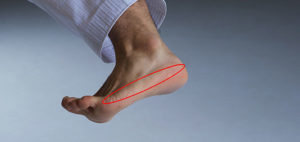 Continue to work on ankle-control drills that you practiced at Yellow Belt, but now add a new position to your routine: have the child bend the foot back and to the side, with the toes curled back. This position will be useful in the side kick, where the outside edge of the foot (its “blade”) is the intended striking-surface. As before, practicing with your child moving each foot from one position to the next.
Continue to work on ankle-control drills that you practiced at Yellow Belt, but now add a new position to your routine: have the child bend the foot back and to the side, with the toes curled back. This position will be useful in the side kick, where the outside edge of the foot (its “blade”) is the intended striking-surface. As before, practicing with your child moving each foot from one position to the next.- Obtain a copy of the Majest Orange Belt test questions well before the test, and practice the test questions with your child. Help your child learn TaeKwonDo vocabulary by printing the crossword puzzle below.
Just for Fun
Print and color!









